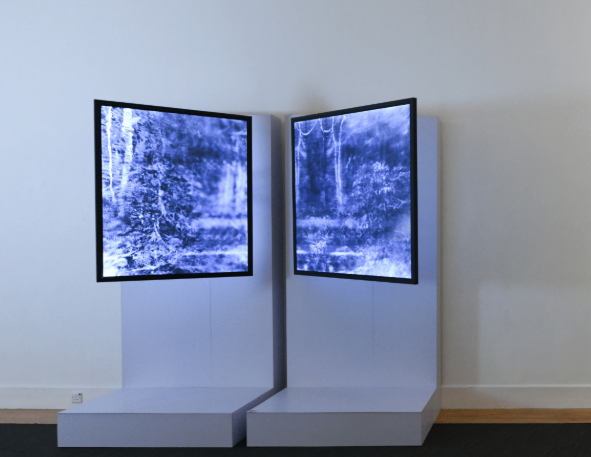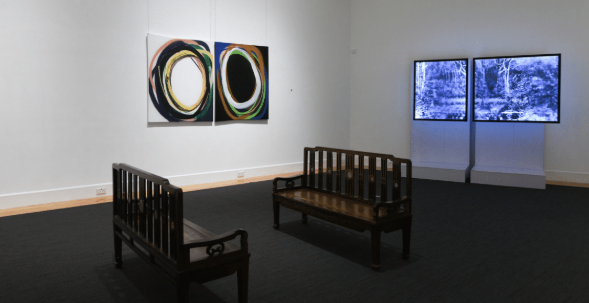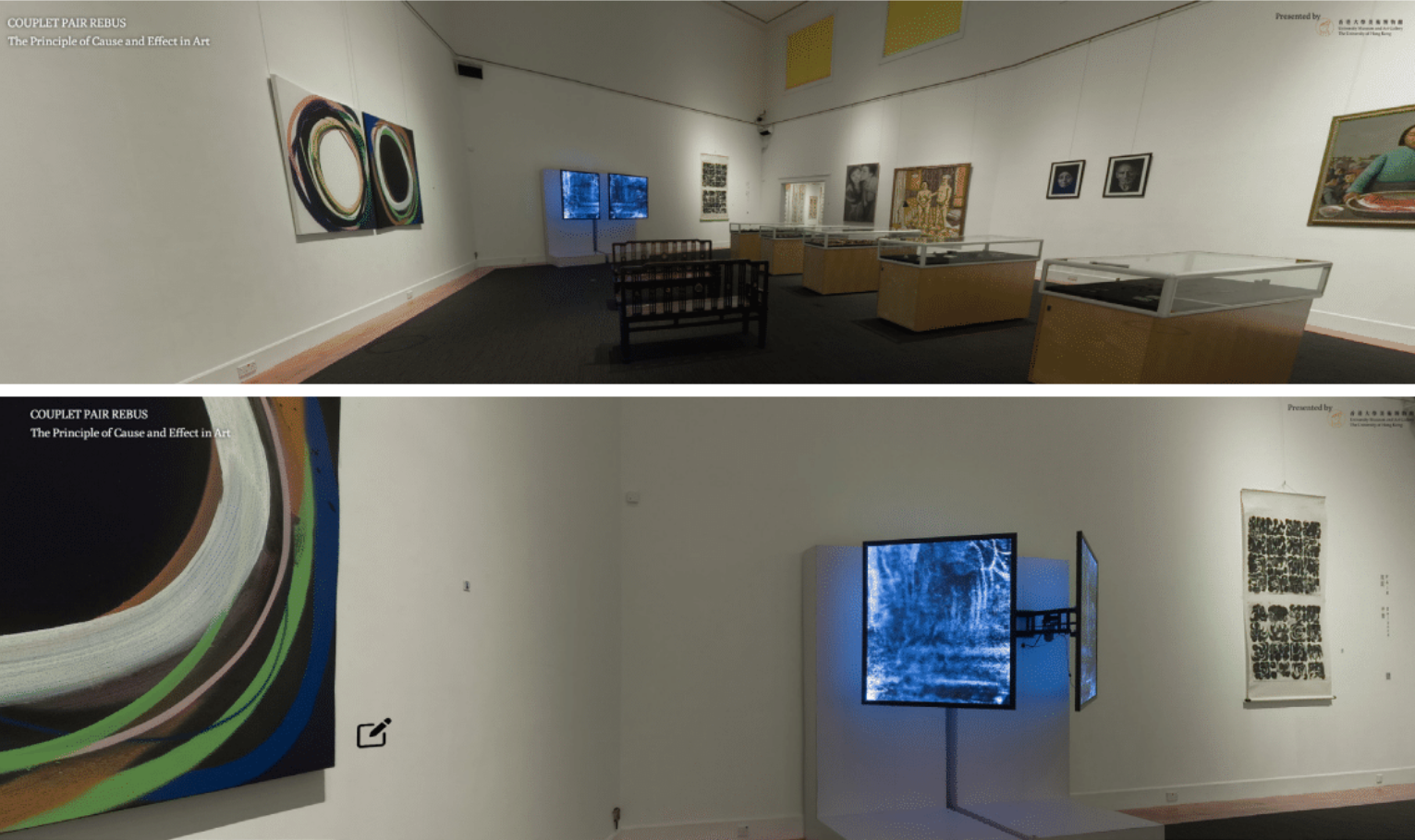Menu
Work
About
Contact
The work was exhibited at the group exhibition COUPLET PAIR REBUS The Principle of Cause and Effect in Art. This exhibition explores the interplay of causality in art in multiple ways. From poem to poem, COUPLET presents itself as a place for reading, as a space of resonances. PAIR is dedicated to balance and symmetry. Here, pairs of artworks form a three-dimensional equilibrium. REBUS presents itself as a space of associations, forming a network of content-related references. The viewer’s task is to be inspired and to decipher the connections.With poems, and works of art by:Irene CHOU, David J. CLARKE, Christoph DAHLHAUSEN, DENG Chengxiu, DENG Shiru, DUANJianwei, Adrian FALKNER, FANG Zhaoling, FANGZhiyong, Beat FELLER, Ian Hamilton FINLAY, FUNGYee Lick Eric, HAN Wo, HUANG Shiling, JAO Tsung-i,JAT See Yeu, JIA Dao,Tobias KLEIN, LAI Jixi, LAMMan Kong, Robert LETTNER, LEUNG Kui Ting,Joseph LEUNG Mong Sum, LI Ki Kwok Victor, LI Jing,LI Zhanzhi, LIANG Qichao, LIAO Zenping, LIU Haisu,LU You, Thích NHAT HANH, Shirin NESHAT, POONYeuk Fai, Mary Curtis RATCLIFF, Peter SCHLÖR,Debe SHAM, SHE Xueman, SHI Shuqing, SimSHUM Kwan Yi, SONG Yonghong, Philipp STADLER,Herbert STAREK, SUN Xingge, TANG Yin, TING YinYung, TU Chen Tsui, WENG Tonghe, XIN Haizhou,YIK Yuet Sek, YUAN Jiagu, YUEN Hung Shue, ZHANGHuaqing, ZHANG Zhidong, JI Zigao, ZHU Ruzhenand 88 generally symmetrical objects from the UMAGcollection, ranging from neolithic earthenware to Nestorian crosses and wood carvings to papercuts.
Publications
Déjà vu
Déjà vu - HK
Déjà vu - Shenzhen



The work was exhibited at the group exhibition COUPLET PAIR REBUS The Principle of Cause and Effect in Art. This exhibition explores the interplay of causality in art in multiple ways. From poem to poem, COUPLET presents itself as a place for reading, as a space of resonances. PAIR is dedicated to balance and symmetry. Here, pairs of artworks form a three-dimensional equilibrium. REBUS presents itself as a space of associations, forming a network of content-related references. The viewer’s task is to be inspired and to decipher the connections.With poems, and works of art by:Irene CHOU, David J. CLARKE, Christoph DAHLHAUSEN, DENG Chengxiu, DENG Shiru, DUANJianwei, Adrian FALKNER, FANG Zhaoling, FANGZhiyong, Beat FELLER, Ian Hamilton FINLAY, FUNGYee Lick Eric, HAN Wo, HUANG Shiling, JAO Tsung-i,JAT See Yeu, JIA Dao,Tobias KLEIN, LAI Jixi, LAMMan Kong, Robert LETTNER, LEUNG Kui Ting,Joseph LEUNG Mong Sum, LI Ki Kwok Victor, LI Jing,LI Zhanzhi, LIANG Qichao, LIAO Zenping, LIU Haisu,LU You, Thích NHAT HANH, Shirin NESHAT, POONYeuk Fai, Mary Curtis RATCLIFF, Peter SCHLÖR,Debe SHAM, SHE Xueman, SHI Shuqing, SimSHUM Kwan Yi, SONG Yonghong, Philipp STADLER,Herbert STAREK, SUN Xingge, TANG Yin, TING YinYung, TU Chen Tsui, WENG Tonghe, XIN Haizhou,YIK Yuet Sek, YUAN Jiagu, YUEN Hung Shue, ZHANGHuaqing, ZHANG Zhidong, JI Zigao, ZHU Ruzhenand 88 generally symmetrical objects from the UMAGcollection, ranging from neolithic earthenware to Nestorian crosses and wood carvings to papercuts.
Publications
Déjà vu
Déjà vu - HK
Déjà vu - Shenzhen



Menu
Work
About
Contact
In the long tradition of landscape painting, two main traditions spring from Western painting and Chinese art, going back well over a thousand years in both cases. The recognition of a spiritual element in landscape art is present from its beginnings in East Asian art, drawing on Daoism and other philosophical traditions, but in the West only becomes explicit with Romanticism. Nature was used to be either adored,encoded with messages, or subservient to mankind,to be arranged. In both cases, the image of nature is contructed and nature is constructed to echo the image. The park is an idylic tamed and domsticated wilderness. Long cuts throughout the landscapereveal ordered symmertical arrangemnets wherereason seems to have entered nature. In the gardens of the East, the literati constructed social hierachies and dialogue into the interplay of the mysterious mountain rocks - capturing time and the fleeting moments of life.Today though, at the end of all that is natural, our position has changed. It is direct and dense, without vistas - unapologetic, non-hierarchical, and notsubservient. It is at the end, where we are beyound equilibrium and far from homeostasis that we look back and forward at the same time.Déjà Vuis a frivolous attempt to reconstruct a lost origine - a slice of artificial wilderness.And so, we shall not cease from exploration, and theend of all our exploring will be to arrive where we started and know the place for the first time. This is a place that articulates the layers of procedural images of nature embedded in the flatness of a new landscape that is multi-dimensional through a constant shift in perception. Within these refractive repetitions, we are left searching with distorted orientation finding new territories in the pixelated wilderness. Based on 3D scanning and recomposing Hong Kong’s nature, Déjà Vu articulates a new landscape, post-industrial and post-natural –composed in bits and bytes - real and manufactured sublime dreams at the same time
#Lenticular print
#Printing
2023-2024
The work was exhibited at the group exhibition COUPLET PAIR REBUS The Principle of Cause and Effect in Art. This exhibition explores the interplay of causality in art in multiple ways. From poem to poem, COUPLET presents itself as a place for reading, as a space of resonances. PAIR is dedicated to balance and symmetry. Here, pairs of artworks form a three-dimensional equilibrium. REBUS presents itself as a space of associations, forming a network of content-related references. The viewer’s task is to be inspired and to decipher the connections.With poems, and works of art by:Irene CHOU, David J. CLARKE, Christoph DAHLHAUSEN, DENG Chengxiu, DENG Shiru, DUANJianwei, Adrian FALKNER, FANG Zhaoling, FANGZhiyong, Beat FELLER, Ian Hamilton FINLAY, FUNGYee Lick Eric, HAN Wo, HUANG Shiling, JAO Tsung-i,JAT See Yeu, JIA Dao,Tobias KLEIN, LAI Jixi, LAMMan Kong, Robert LETTNER, LEUNG Kui Ting,Joseph LEUNG Mong Sum, LI Ki Kwok Victor, LI Jing,LI Zhanzhi, LIANG Qichao, LIAO Zenping, LIU Haisu,LU You, Thích NHAT HANH, Shirin NESHAT, POONYeuk Fai, Mary Curtis RATCLIFF, Peter SCHLÖR,Debe SHAM, SHE Xueman, SHI Shuqing, SimSHUM Kwan Yi, SONG Yonghong, Philipp STADLER,Herbert STAREK, SUN Xingge, TANG Yin, TING YinYung, TU Chen Tsui, WENG Tonghe, XIN Haizhou,YIK Yuet Sek, YUAN Jiagu, YUEN Hung Shue, ZHANGHuaqing, ZHANG Zhidong, JI Zigao, ZHU Ruzhenand 88 generally symmetrical objects from the UMAGcollection, ranging from neolithic earthenware to Nestorian crosses and wood carvings to papercuts.
Publications
Déjà vu
Déjà vu - HK
Déjà vu - Shenzhen


